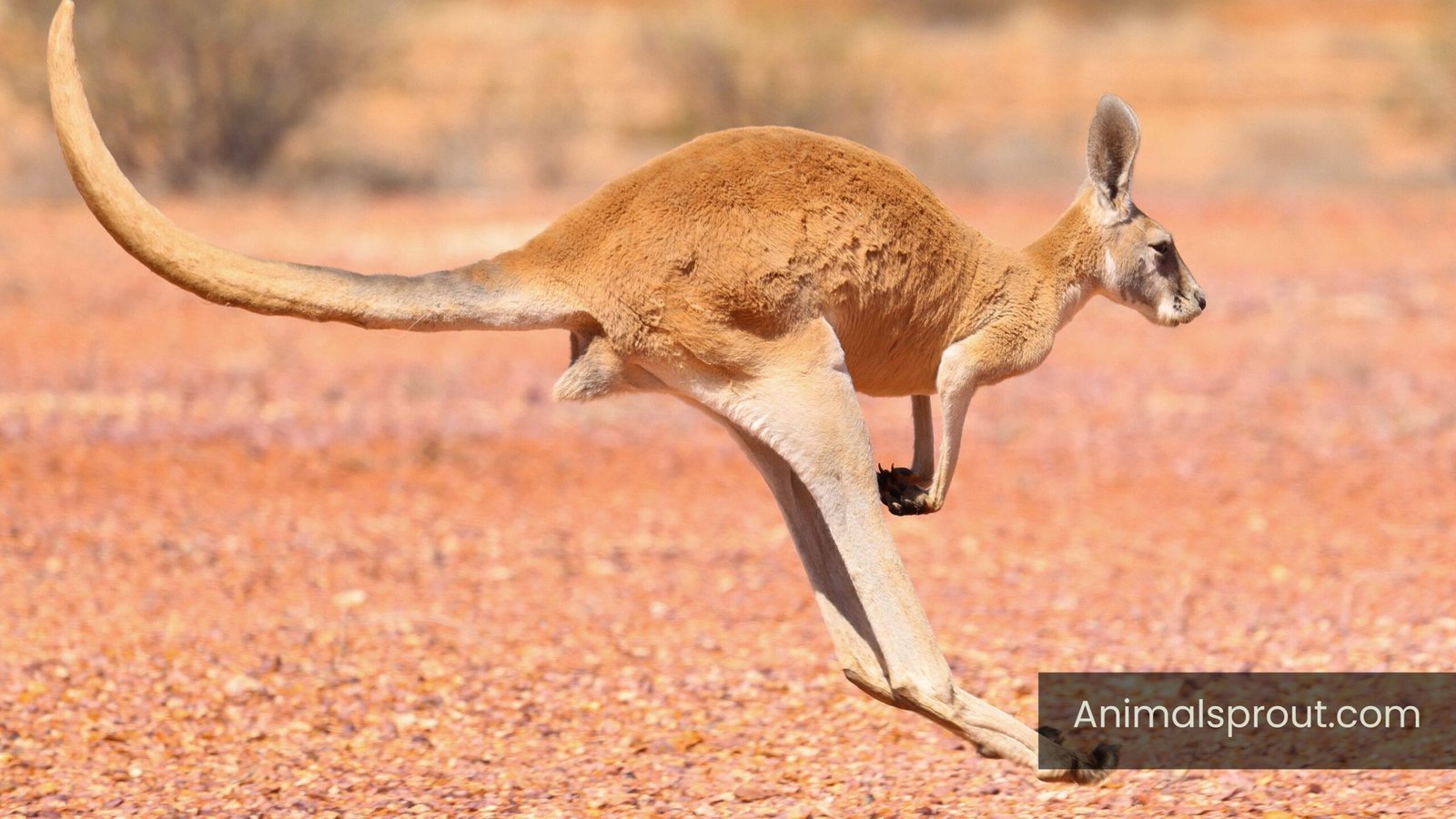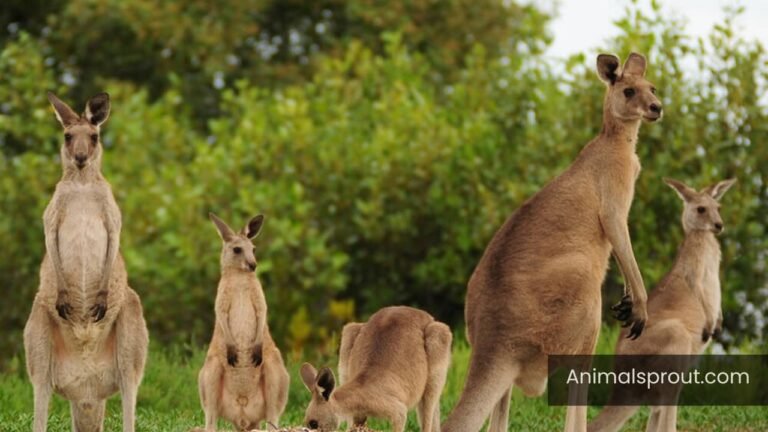Interesting Facts: How Strong Are Kangaroos?
What if I told you that kangaroos can deliver a kick powerful enough to deter even the fiercest predators? The strength of these marsupials is nothing short of astounding, raising the question: How Strong Are Kangaroos? This article will take you on a journey through their physical prowess, from their impressive jumping capabilities to their formidable defense mechanisms. By exploring their strength, you’ll gain insight into their survival strategies and the important role they play in Australia’s biodiversity.
How Strong Are Kangaroos?
Scientific Name: Macropus
Class: Mammalia
Diet: Herbivore
kangaroo kick force: 850 psi
Kangaroos are not just iconic symbols of Australia; they are also remarkable athletes in the animal kingdom. With their powerful hind legs, these marsupials can leap up to ten feet high and cover distances of over 30 feet in a single bound. This incredible strength allows them to escape predators swiftly and traverse the vast Australian landscape with ease. But what’s even more fascinating is how their muscular structure is uniquely adapted for energy-efficient movement, allowing them to hop for hours without expending excessive energy.

kangaroos possess a surprising level of strength beyond their impressive jumping abilities. Their powerful legs can deliver a forceful kick, strong enough to fend off threats and assert dominance during mating displays. Interestingly, male kangaroos engage in “boxing” matches, using their forelimbs to grapple while delivering those powerful kicks.
Bite Force (PSI)
Kangaroos, often celebrated for their iconic hopping and strong hind legs, possess an underrated feature: their bite force. Research indicates that a kangaroo’s bite can exert a pressure of around 975 PSI, which is formidable when you consider their herbivorous diet. This powerful bite allows them to efficiently consume tough vegetation, but it also serves as a defense mechanism against potential threats. When cornered or threatened, a kangaroo can deliver a surprisingly powerful bite, showcasing that their strength isn’t limited to their legs alone.
Moreover, the bite force of kangaroos can be seen as a reflection of their evolutionary adaptations. In the wild, competition for food can be fierce, and having the ability to break down fibrous plant material gives them a significant advantage. Their robust jaw structure and muscular build are tailored not just for grazing but also for self-defense, allowing them to fend off predators like dingoes or even confront human encroachment.
How Strong Is A Kangaroo Kick?
The power of a kangaroo kick is a marvel of nature, combining strength, agility, and precision. A fully grown red kangaroo can deliver a kick with a force that exceeds 800 pounds per square inch, rivaling the impact of a heavyweight boxer. This incredible strength is not just for show; it serves as a critical defense mechanism against predators. When threatened, kangaroos use their powerful hind legs to kick, delivering blows that can incapacitate even large foes.

What’s fascinating is the biomechanics behind this formidable kick. Kangaroos possess unique muscular adaptations that allow them to store energy in their tendons, enabling them to unleash explosive power with minimal effort. This energy-efficient movement means they can cover vast distances while conserving energy, making them not only strong but also incredibly efficient in their natural habitat.
Readmore: Explore Top 20 Most Shy Animals In The World.
How Fast Can Kangaroos Run?
Kangaroos are remarkable athletes, capable of reaching impressive speeds that can leave onlookers in awe. In short bursts, these marsupials can sprint up to 44 miles per hour (about 71 kilometers per hour), making them one of the fastest animals on land relative to their size. Their unique mode of locomotion—hopping—enables them to cover ground efficiently while conserving energy. Unlike many other animals that rely on continuous strides, kangaroos use elastic energy stored in their tendons, allowing them to bounce across the Australian landscape with remarkable agility.
What’s even more fascinating is how their speed plays a crucial role in their survival. When threatened by predators, kangaroos don’t just flee; they employ strategic zigzagging movements to confuse their pursuers. This instinctual behavior highlights their evolutionary adaptation to the harsh Australian environment, where agility and speed are paramount for evading danger.
How strong is a kangaroos tail?
The strength of a kangaroo’s tail is nothing short of remarkable, serving as a powerful tool in their daily lives. Often referred to as a “fifth limb,” a kangaroo’s tail can weigh as much as its head and torso combined, providing significant support when the animal hops or stands still. In fact, during movement, kangaroos utilize their tails for balance, allowing them to achieve impressive leaps of up to ten feet in a single bound.

But the tail’s prowess doesn’t end with locomotion; it also plays a crucial role in social interactions and defense mechanisms. When threatened, kangaroos can use their tails to brace themselves while delivering powerful kicks with their hind legs, which are formidable enough to deter predators. This multifunctional appendage not only showcases the kangaroo’s adaptability but also highlights the intricate balance of strength and grace inherent in these iconic marsupials.
Related article: Are Kangaroos Smart?
How Are Kangaroos So Strong?
Kangaroos are often celebrated for their impressive strength, which is a remarkable combination of powerful muscles and unique anatomical adaptations. Their hind legs are the powerhouse of their physique, containing large muscles that enable them to leap great distances—up to ten feet high and over thirty feet in a single bound. This extraordinary jumping ability is not just for show; it serves practical purposes such as escaping predators and covering vast distances in search of food and water in the arid Australian landscape.
What sets kangaroos apart is their highly efficient energy storage system. Their tendons act like springs, storing kinetic energy during each leap, which allows them to conserve energy while traveling long distances. This adaptation means that kangaroos can maintain a fast pace with minimal exertion, making them incredibly resilient. Their muscular tails serve as a counterbalance during jumps, enhancing stability and control. Together, these features create a formidable animal that thrives in its environment, showcasing nature’s ingenuity in fostering strength through evolutionary design.
How Strong Are Kangaroos Compared To Humans?
Kangaroos possess an impressive combination of strength, agility, and unique physical adaptations that set them apart from humans. While an average adult male kangaroo can weigh between 120 to 200 pounds and stand over six feet tall, their powerful hind legs allow them to leap distances of up to 30 feet in a single bound. This ability to propel themselves with such force is not just for show; it plays a crucial role in their survival, enabling them to escape predators quickly or cover large distances in search of food and water. In contrast, the human body, while capable of remarkable feats of endurance and strength, lacks the specialized musculature and energy-efficient mechanics that kangaroos have honed through evolution.

Moreover, when it comes to sheer muscle power, kangaroos are astonishingly strong relative to their size. Their legs are not only designed for jumping but also serve as formidable weapons; a kick from a kangaroo can exert over 800 pounds of force, enough to deter even the most determined of threats. To put this into perspective, a human would need extensive training and conditioning to achieve similar levels of explosive power. While humans excel in fine motor skills and complex problem-solving, kangaroos remind us of the raw physical capabilities nature can develop. In the grand tapestry of evolution, these fascinating marsupials showcase a different kind of strength—one that emphasizes survival in a challenging environment rather than the prowess often celebrated in human athleticism.
Kangaroo vs Gorilla Strength Comparison
When comparing the strength of kangaroos and gorillas, one might initially assume that the sheer size and muscle mass of the gorilla would give it the upper hand. However, kangaroos possess a unique combination of agility and powerful hind legs that allows them to deliver impressive force in their kicks. A single kick from a red kangaroo can exert pressure equivalent to a heavyweight boxer’s punch, showcasing a different kind of strength that emphasizes explosiveness and precision rather than brute force.
On the other hand, gorillas, with their immense upper body strength, are capable of lifting over ten times their body weight, making them formidable when it comes to climbing and manipulating their environment. Their strength is not just about raw power; it’s also about social structure, as these gentle giants often engage in displays of strength to assert dominance within their groups. This interplay between physical capability and social behavior reveals that strength is multifaceted—it can be a tool for survival, a means of communication, or even a display of prowess in the wild. Ultimately, while kangaroos and gorillas each exemplify strength in their own right, their adaptations speak to the diverse evolutionary paths that have shaped these remarkable species.
Readmore: Explore Animals that Are Quiet.
Final Words
How Strong Are Kangaroos? Kangaroos are remarkable creatures that exhibit extraordinary strength and agility, making them well-adapted to their environment. Their powerful hind legs allow them to cover vast distances with ease, while their muscular tails provide balance and support. Their ability to deliver strong kicks serves as an effective defense mechanism against predators.
As we continue to study these fascinating animals, it becomes increasingly clear that they possess not only physical prowess but also unique adaptations that contribute to their survival in the wild. Let us appreciate and protect these incredible marsupials and their habitats for future generations.
FAQS
How hard can a kangaroo kick?
Kangaroos are known for their powerful hind legs, which they use for hopping and defense. A strong adult kangaroo can deliver a kick with a force of around 800 pounds per square inch. This remarkable strength can cause significant injury to potential threats, including humans and other animals.
How strong are kangaroos arms?
Kangaroo arms are not particularly strong compared to their powerful hind legs, which are designed for jumping and covering large distances. Their forelimbs are relatively short and are primarily used for balance, support, and feeding rather than for strength. Kangaroos use their arms to grasp food, hold onto their young, or maintain stability while moving. While they can use their arms to deliver a quick swipe or push if threatened, this is not their primary means of defense.







